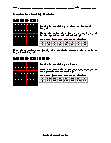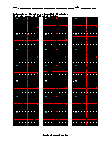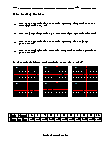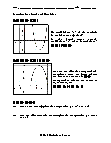Graphing Parabolas Worksheets
How to Graph a Parabola - A parabola is a mirror-symmetrical and a two-dimensional curve that resembles the shape of an arch. Any point on the parabola is present equidistant from the focus and fixed straight line known as the directrix. For graphing parabola, we need to figure out the vertex and other points on sides of vertex to find out the path a point travel. Here we have discussed the steps required for graphing a parabola. First, identify the relevant parts of the parabola. Then figure out the equation of the parabola. If the coefficient in the equation is positive, the parabola opens upward, and if the coefficient is negative, the parabola opens downward. If the equation of a parabola has squared y term instead of squared x term, the parabola will open sideways and oriented horizontally. Figure out the axis of symmetry passing through the vertex. In vertical parabola, the axis of symmetry is the same as the x-axis. That means, the value of x where a parabola crosses the axis of symmetry. Once you have found out the axis of symmetry, put the values in to get the values of x and y coordinates. Create a table by using the chosen x values and write them down in the first column. The tables will give you the coordinates required to graph the equation. Plug in the values of x in the equation to get the values of the corresponding y values. Next, insert the values of y in the table. Graph the x and y values on the graph. Connect the points that you plotted to form the graph of the parabola.
-
Basic Lesson
Demonstrates how to determine the pitch of a parabola prior to graphing it. Practice problems are provided. Parabolas are of quadratic form y= ax2 + bx +c If a is positive, the parabola will open upward and has minimum point. If a is negative, the parabola will open downward and has maximum point.
View worksheet -
Intermediate Lesson
Explores how to graph parabolas within a given interval. Practice problems are provided. Graph the parabola y = x2 - 4x on interval (-1, 5). Place the value of x {-1, 0, 1, 2, 3, 4, 5} in the equation and calculate y.
View worksheet -
Independent Practice 1
Find the roots of following graphs. The answers can be found below.
View worksheet -
Independent Practice 2
Examples: What is the equation of the axis of symmetry for parabola with a turning point of (1, 6)? Does the quadratic equation (parabola) y= -x2 -6x + 2 have axis of symmetry where x = 3?
View worksheet -
Homework Worksheet
12 Graphing Parabolas problems for students to work on at home. Example problems are provided and explained.
View worksheet -
Basic Lesson
Demonstrates how to determine the pitch and axis of symmetry for a parabola. Will the graph of the parabola y = 5x2 + 3x - 8 open upward or downward? Consider the equation of a parabola in the form of y = ax2 + bx + c If 'a' value is positive, it opens upward and vice versa.
View worksheet -
Intermediate Lesson
Explores how to determine the coefficient 'a' and roots of a parabola. The coefficient'a' of the parabola is positive or negative? As the graph opens upward, coefficient 'a' value is positive.
View worksheet -
Independent Practice 1
What is the turning point of the parabola y = -x2 + 8x – 3? The answers can be found below.
View worksheet -
Homework Worksheet
Graphs of Parabolas problems for students to work on at home. Example problems are provided and explained.
View worksheet
How to Predict Movement of a Graph of a Parabola
To determine the shift or movement in the graph of a parabola, we need to find out its vertex and replot the point. And most importantly, we will have to learn to read the equation and understand how the equation shifts vertically and horizontally. Let's understand this with the simplest parabola equation y= x2. The equation has the vertex at (0,0) and opens upward. Assuming we consider the points (-1, 1), (1,1), (-2,4) and (2,4,). We can understand the shifting based on this equation. If we want to shift parabola upward, we will consider the equation y= x2 + 1. This way, we can shift the parabola upward by 1 unit. The vertex will now shift to (0,1) from (0,0). It will have the same shape as the original parabola, but the y-coordinates will be moved upward to 1 unit. If we want to shift the parabola downward, we will take the equation y= x2 - 1. This way, we shift the original parabola downward by 1 unit. The vertex now moves to (0,-1) from (0,0). The parabola will have the same shape as the original parabola, but y-coordinates will be shifted downward by 1 unit.
The Designs
A mathematician is asked to design a table. He first designs a table with no legs. Then he designs a table with infinitely many legs. He spend the rest of his life generalizing the results for the table with N legs (where N is not necessarily a natural number).
A Little About Archimedes
Archimedes (287-212 BC) was a Greek mathematician who discovered the formulae for finding the areas and volume of spheres, cylinders, parabolas and other plane and solid figures. Known for crying "eureka" when he discovered the buoyancy principle.















